-
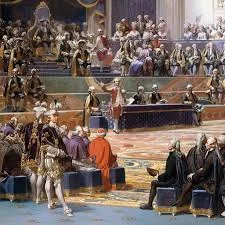 The opening ceremony began on 5 May. Louis XVI, opened the session reviewing the circunstances that had led to the convocation, and what he expected from the Estates General. Necker,Minister of Finances, talked about the economic situation. The budget deficit was 56 million. Necker claimed that new taxes would be enough to make up for the deficit, but but the Commoners dissatisfied with such a mediocre discourse, and decided to take things into their own hands. The Revolution had begun...
The opening ceremony began on 5 May. Louis XVI, opened the session reviewing the circunstances that had led to the convocation, and what he expected from the Estates General. Necker,Minister of Finances, talked about the economic situation. The budget deficit was 56 million. Necker claimed that new taxes would be enough to make up for the deficit, but but the Commoners dissatisfied with such a mediocre discourse, and decided to take things into their own hands. The Revolution had begun... -
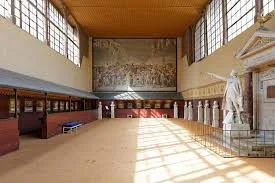 Built in 1686, this sports hall was privately owned. The royal family, and especially the king, played real tennis here, a type of ball game that was a predecessor of tennis. On 20 June 1789 the Commoners made the famous Oath of the Real Tennis Room here, and on 7 "Brumaire" of the year ll (28 October 1793), a decree in the Convention procured the room for the French nation.
Built in 1686, this sports hall was privately owned. The royal family, and especially the king, played real tennis here, a type of ball game that was a predecessor of tennis. On 20 June 1789 the Commoners made the famous Oath of the Real Tennis Room here, and on 7 "Brumaire" of the year ll (28 October 1793), a decree in the Convention procured the room for the French nation. -
The National Assembly took this name on 9 July 1789, to reflect its self-appointed mission to write a constitution for France. The mission faced numerous crises (economical, political and social) until it was cancelled and replaced by the legislative assembly at the end of September 1791.
-
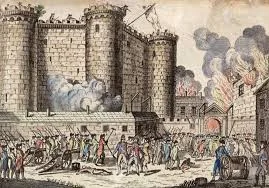 It was an iconic conflict of the French Revolution. On July 14, 1789, fears that King Louis XVI was about to arrest France’s newly constituted National Assembly led a crowd of Parisians to successfully besiege the Bastille, an old fortress that had been used since 1659 as a state prison. As a victory by Parisians over the king’s power, the event quickly became a symbol of a revolutionary struggle.
It was an iconic conflict of the French Revolution. On July 14, 1789, fears that King Louis XVI was about to arrest France’s newly constituted National Assembly led a crowd of Parisians to successfully besiege the Bastille, an old fortress that had been used since 1659 as a state prison. As a victory by Parisians over the king’s power, the event quickly became a symbol of a revolutionary struggle. -
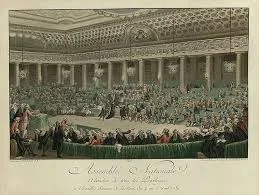 The August Decrees, were a set of 19 articles passed by the National Constituent Assembly during the French Revolution which abolished feudalism in France and ended the tax exemption privileges of the upper classes. Although not without flaws, the passage of the decrees was a significant achievement of the Revolution.
The August Decrees, were a set of 19 articles passed by the National Constituent Assembly during the French Revolution which abolished feudalism in France and ended the tax exemption privileges of the upper classes. Although not without flaws, the passage of the decrees was a significant achievement of the Revolution. -
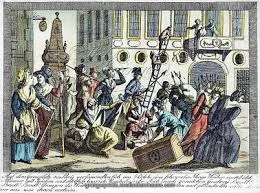 The Declaration of the Rights of Man and of the Citizen came into existence in the summer of 1789, born of an idea of the Constituent Assembly, which was formed by the assembly of the Estates General to draft a new Constitution, and precede it with a declaration of principles. In its preamble and its 17 articles, it sets out the “natural and inalienable” rights, which are freedom, ownership, security, resistance to oppression it recognizes equality before the law and the justice system.
The Declaration of the Rights of Man and of the Citizen came into existence in the summer of 1789, born of an idea of the Constituent Assembly, which was formed by the assembly of the Estates General to draft a new Constitution, and precede it with a declaration of principles. In its preamble and its 17 articles, it sets out the “natural and inalienable” rights, which are freedom, ownership, security, resistance to oppression it recognizes equality before the law and the justice system. -
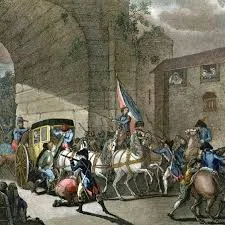 The flight to Varennes is the name given to the royal family’s failed escape from Paris in June 1791. Dissatisfied with the course of the revolution, King Louis XVI acceded to suggestions that it was time to flee the capital. Though well hatched, the plan failed and the royal family were arrested at Varennes. Their capture was humiliating both for the king and the moderates who supported a constitutional monarchy, a system that now seemed unworkable.
The flight to Varennes is the name given to the royal family’s failed escape from Paris in June 1791. Dissatisfied with the course of the revolution, King Louis XVI acceded to suggestions that it was time to flee the capital. Though well hatched, the plan failed and the royal family were arrested at Varennes. Their capture was humiliating both for the king and the moderates who supported a constitutional monarchy, a system that now seemed unworkable. -
Replacing the National Constituent Assembly, the Legislative Assembly was the governing body of France between October 1791 and September 1792. The Legislative Assembly inherited government at a time when there were grave doubts about the intentions of the king and the workability of the new constitution. It also had its own internal weaknesses, most notably a lack of political experience and questions.
-
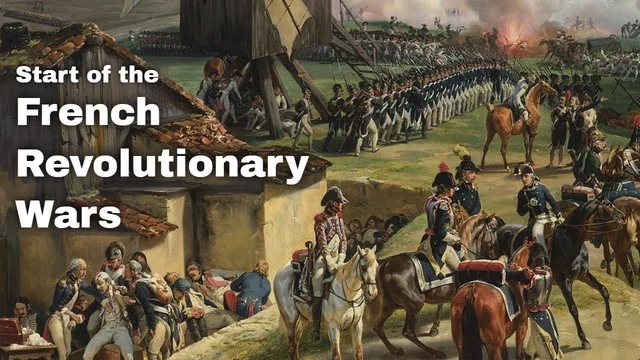 The Legislative Assembly of France declared a revolutionary war on Austria on April 20th 1792. the Assembly’s declaration sais taht deliberating on the formal proposition of the king, considering that the Court of Vienna in contempt of treaties, has not ceased to grant open protection to rebel Frenchmen, that it prompted and took concerted action with several European powers against the independence and safety of the French nation
The Legislative Assembly of France declared a revolutionary war on Austria on April 20th 1792. the Assembly’s declaration sais taht deliberating on the formal proposition of the king, considering that the Court of Vienna in contempt of treaties, has not ceased to grant open protection to rebel Frenchmen, that it prompted and took concerted action with several European powers against the independence and safety of the French nation -
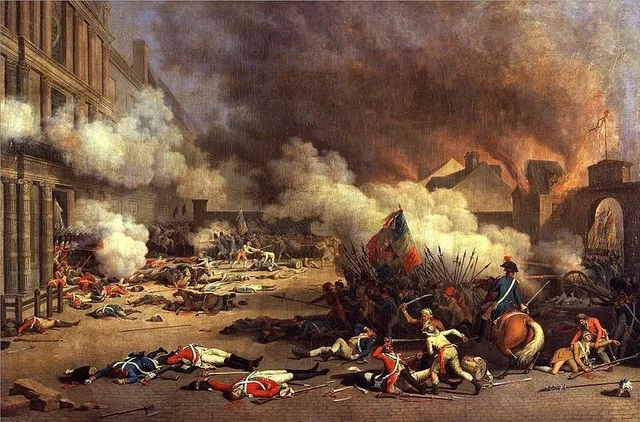 The Storming of the Tuileries Palace, was a defining moment in the French Revolution that saw the armed revolutionaries of Paris invade the residence of King Louis XVI of France and the massacre of his Swiss Guards. The event effectively abolished France's monarchy, ushering in a new phase in the Revolution.
The Storming of the Tuileries Palace, was a defining moment in the French Revolution that saw the armed revolutionaries of Paris invade the residence of King Louis XVI of France and the massacre of his Swiss Guards. The event effectively abolished France's monarchy, ushering in a new phase in the Revolution.
